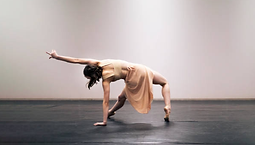
Exploration Through Dance

Welcome!
Welcome! I created this website to educate young dancers or young people interested in dance on what dance really is. Through this website, I will talk about what dance is and different styles of it, as well as teaching how I do certain movements in dance and showing my own exploration and choreography in dance. To learn more about this you can go to the "About" page. My overall goal for this website is to inspire and help young dancers to follow their passions and that everything in dance is possible, it just requires practice. So I hope this helps you with your dancing! Enjoy!
Photo Credit: Google Images

What is Dance?
So, what is dance? Some people would just jump to certain stereotypes for example: a girl in a tutu and a tight bun wearing painful shoes, standing all perfectly poised at a ballet bar. Or maybe a couple in their fanciest clothes slow dancing in a big ballroom. Well believe it or not, there’s more to it. Dance is type of movement throughout the body. A dance is a piece of different and intricate parts of choreography and steps strung together. It typically follows a sequence of steps but could also be improvisation. A dance normally has a similar rhythm and emotion to the background music. Dance can express different emotions and can have deeper underlying meanings. Emotions and choreography in dance can show different ideas and concepts. Connections can be made with other dancers or viewers whether it be connection in feeling or in ideas.
Photo Credit: Google Images
Dance has 5 universal elements. These include body, action, space, time, and energy.
Body: The body is the main building block of dance. When a dancer is dancing, they have to think about every part of their body, even if not every part is not moving. The whole body could be used at once in a dance or just certain parts (e.g., just the legs or just the right arm).
Action: Action is what the dancer is doing. Whether they are running across the stage or staying in one spot or doing a big jump. Action can refer to the choreography itself.
Space: The space or spacing is a key fundamental to a dance. A dancer has to use their whole space and their whole circumference. Dancers use different levels, directions, and formations.
Time: The timing in a dance conveys the rhythm and emotion to a dance. If the timing is quick, the movements are more likely to be fast, along with the music. Same with emotion, if the music is slow then the emotions used are more likely to be more solemn or sad.
Energy: A dancer’s energy can relate to their emotion and movement. For example, the energy could be more relaxed and smoother or more sudden.


Dance is something that has gone back thousands and thousands of years. The earliest records of dance were in cave paintings in India in around 8000 BCE. There are also tomb paintings from ancient Egypt dating back to around 3300 BCE. Dance has developed over time into multiple different styles. Newer music genres such as rock, electronic, or pop have helped develop new speeds, emotions, and movements in dances to create new styles.
There are hundreds of different styles of dance ranging from ballroom dancing to ballet, to jazz, to hip hop, to Acro, to salsa, to folk dance, and so much more. Some styles are more similar or different than others whether it be the speed of movement, the music, the emotions, or other things differentiating them.
Photo Credits: Pinterest
Different Styles of Dance:

Photo Credit: Pinterest

Photo Credit: Google Images
Ballet:
Ballet is a style of dance which is based on preciseness and technique. Ballet uses different types of difficult steps that flow gracefully together. Ballet uses multiple different French terms for each movement and step. A “ballet” can also be known as a series of different ballet dances put together to tell a story. Like a play or musical (but without speaking to tell the story). Famous ballets include The Nutcracker, Swan Lake, Giselle, Sleeping Beauty, and more. There are multiple different styles of ballet as well. These styles are classical ballet, romantic ballet, neoclassical ballet, and contemporary ballet. Ballet differentiates from other styles with its sophistication and gracefulness. How it has simple but intricate steps. Moves flow together more in ballet. Ballet is also known for its specific costumes including tutus, tights, and sometimes point shoes. These costumes help a dancer look light and weightless.
Jazz:
Jazz is a more upbeat version of ballet. While still focusing on technique, jazz has a more energetic and liveness aspect to it. Jazz dance is a bit of a mix of African and European styles. It started in the 20th century when choreographers were using African dance steps in a European movement style. Jazz is known for its upbeat music along with rhythmically intricate, dynamic, and fast paced steps. It can be very expressive adding individual style through improvisation.

Photo Credit: Pinterest


Modern:
Modern dance is like a mix of ballet and contemporary. (Contemporary is a more abstract ballet focusing less on gracefulness, fluidity, and technique). Like contemporary, modern dancers wear bare feet or socks. Modern uses some technique elements from ballet. But more like contemporary, modern has more of a free movement aspect and flows differently rather than focusing on rigid poses and technical positions. It is more natural and relaxed. Modern differentiates from other styles because it focuses mainly on expression but uses other elements such as gravity, breath, and more. Modern emerged in the late 1900s, defying against strict and technical modern.
Photo Credit: Pinterest
Photo Credit: Google Images